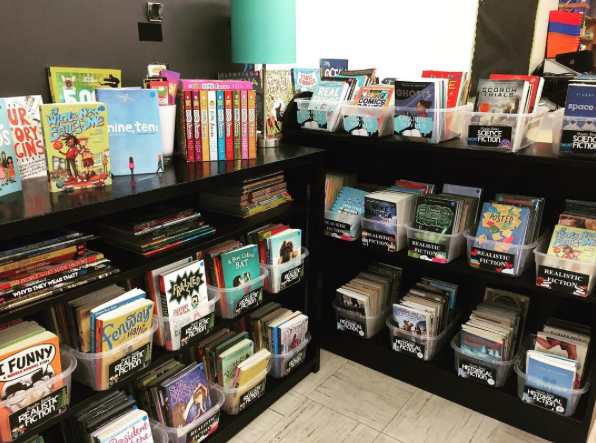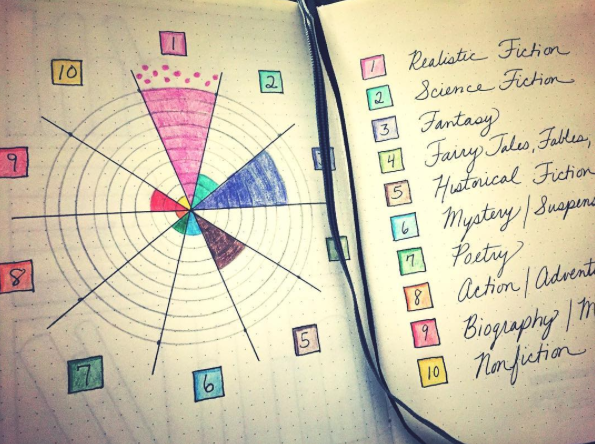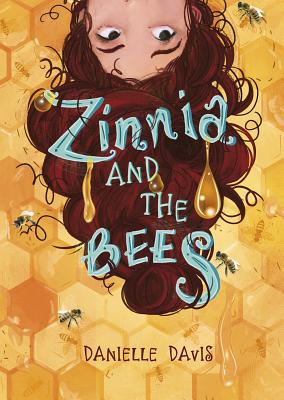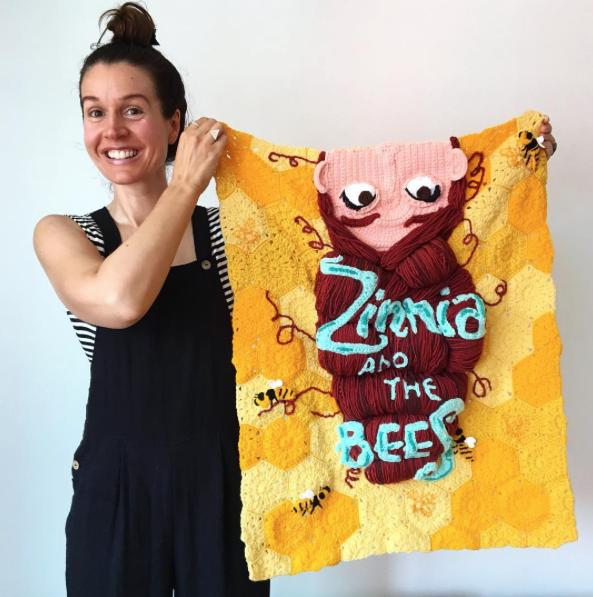Share this Post

Studying Genre & A Conversation with Danielle Davis
Studying Genre
As I start our new school year rolling and we are setting up our reading journals and discussing goals, one of the first things we do is have a quick crash course in identifying genres. So today I want to chat with you about why it’s a good idea for students to study genre, which genres to study, the difference between genre and format, and finally I’ll share some ideas and resources to get your students learning more about different genres.
Why study genre?
So, why study genre? We’ve already got a lot on our plate and a curriculum that is jam packed. Why is it important for students to know the difference between science fiction and fantasy? Or to know a mystery when they see one?
- Studying genre helps students expand their reading habits and get introduced to genres they might not have tried yet.
- Studying genre also expands students’ views of each genre and helps them realize that NOT all books in a genre are the same. Not all fantasy is about dragons or set in a medieval world. Some have cats like The Warriors series and some are even set in modern times! And often, books are a blend of more than one genre – Historical Fiction AND Action-Adventure like the I Survived Series. Or Science Fiction with a twist of Mystery like Space Case.
- Studying genre helps with comprehension. Knowing how a certain type of book tends to go helps you figure out the plot, make predictions, and pick out themes and delve into character more deeply. For example, if you are reading a Fantasy you’re going to be on the lookout for a quest narrative, special magical objects, maybe a good character who turns out to be bad, and a theme that might be really about Good vs. Evil. If they are picking up a mystery, they’ll want to be searching for clues and twist endings. If reading historical fiction they might be looking for lessons that would resonate today. Studying past turning points helps us figure out who we are. Knowing those common tropes and knowing why those genres are important helps students dig so much deeper and can even change them as a person.
- And finally, learning about genre helps kids develop their own reading identity and figure out what they really like. Learning the language and vocabulary of genre is important so they have a name for the kinds of stories they want to read and can then go ask for it at a bookstore or the library or when they search online. So if they know that they like Magical Realism, they can ask the clerk to help them find more of those kinds of books. Last week I was thinking about how the power of knowing the vocabulary can help you find what you like. My ten year old and I have recently been binge-watching A LOT of Project Runway. And I do not have any kind of background in sewing or fashion terms. For me, when I go shopping, I just kind of wing it and know what I like when I put it on. But after watching several seasons of Project Runway in a row you start to pick up the names of various fabrics and cuts and styles. And I realize – a-ha! I do NOT like high-low hems or mermaid dresses. BUT – that kind of skirt that always seems to look okay on me? That’s an A-line skirt! SO now, when I go shopping and a clerk asks if they can help me, I will say, “Yes! Show me your A-line skirts and dresses, please!” Basically what I’m saying is knowing the words for what you like is hugely helpful in efficiently getting you more of that.

Which genres to study?
I tend to focus on how the characters, setting, and plot are all clues to help you figure out the genre. And the fiction genres I focus on are realistic fiction, historical fiction, mystery, action/adventure, traditional literature (like folk tales, tall tales and fairy tales), science fiction, and fantasy. With a strong emphasis on how sometimes they can blend. And I don’t go into depth at 5th grade, but I do mention westerns, horror, and romance. And I’ll tell you – that Science Fiction/Fantasy genre always seems so imperfect. I mean – a book with talking animals in it. IS that… fantasy? I wouldn’t put Charlotte’s Web with Eragon. So…. we do talk about how there is nuance and fuzziness in those categories and I introduce terms like speculative fiction, paranormal, magical realism and urban fantasy. I don’t expect mastery here. But – if they can read a book like, say, The Seventh Wish. And say things like “Well, it could be realistic fiction because it’s about a typical family in modern times going through real-life challenges but it might be fantasy because the fish gives out magic wishes.” That is what I’m looking for. Not certainty but the ability to have a discussion around genre and recognize the major elements of each one.
What’s the difference between genre and format?
One of the points of growth for me is really recognizing the difference between genre and format. Poetry and graphic novels are NOT really genres. You can have a novel in verse that is a memoir like Brown Girl Dreaming or realistic fiction, like Moo. And graphic novels span every imaginable genre from traditional literature in Fairy Tale Comics to fantasy in Amulet and science fiction in Hilo to realistic fiction in Roller Girl. And as much as I know that…. I still separate them out because their format does make them so unique. And so many of my students just gravitate toward those graphic novels. So I want to make it easy for them to find. And just last week, after much consideration, I finally caved and shelved Nine, Ten, Towers Falling, Eleven, and the other 9/11 books in historical fiction. (And now I feel really old!)
Some ideas & resources

We’ll wrap up this segment by sharing a few ideas about how to reinforce the study of genre in your classroom or library or with your kids at home! Here are 6 ideas to get you started:
- Keep track of those genres on a chart or graph. I have a circle tracker that I love to use that I’ll link to in the shownotes. It’s colorful and flexible and fun!
- Give students a stack of books and have them sort them by genre or identify the genre if they are all the same. And encourage them to use the vocabulary they’ve learned to back up what they’re saying. And look at the cover and back description of the setting, characters, and plot for those clues.
- Another way to go is to give them a stack and tell them the genre. And then THEY have to create a definition based on the books in that category. And then they can present to their peers. If you don’t have physical books to use, I’ve cut out pictures and blurbs from Scholastic flyers and you could also have them search a genre category on Amazon or Goodreads.
- Have students work together to create a genre display. Last year, right around Halloween I had a group of kids work on a mystery/paranormal display for our classroom door. Kids could also work on a video project or a Google Slideshow to teach others about genre.
- I used Kahoot last year to reinforce genre and my students loved it! Kahoot is an online quiz site where teachers can create any type of quiz and students log-in with a Chromebook or ipad and take the quiz and get live results together. It’s fun, it’s interactive, and they have really awesome music on that site!
- Have kids make #BookSnaps highlighting the genre of the books they are reading! I talked more about #BookSnaps in episode #19 which was all about alternatives to reading logs. But basically, kids take a picture of their book, maybe annotate it with a photo editing tool and post it to social media. So, you could direct them to simply post the cover and name the genre. Or you could ask them to find some evidence inside the book to back up why they think that book fits the criteria for that genre. And take a picture of page that offers a clue and then annotate it to explain. I use SeeSaw for #BookSnaps but older kids might like SnapChat or Twitter.
Those are a few things that I have tried and plan to explore this year as I help students grow into self-aware and self-directed readers. But – I know how incredible my listeners are and I am sure you all have some fabulous ideas about how to teach and reinforce genre. Please share them with the rest of us! You can tag me on Twitter or Instagram – our handle is @books_between or email me at booksbetween@gmail.com . And I’ll share out some of your ideas.
interview outline
Today I am thrilled to welcome Danielle Davis to the podcast. She is the author of the recently released middle grade novel Zinnia and the Bees. We chat about knitting, composting, and the surprising origins of her novel!

zinnia and the bees
Your debut novel Zinnia and the Bees was just released this month and I am so excited for my students and kids all around the world to meet these characters.
For those listening who haven’t yet had a chance to read the book, can you tell us a bit about it?
This is an alternating point of view novel like none other that I have read…
How did figure out that you wanted to include the bees’ perspective?
What sort of research did you do to make sure you got those details right?
So, I have to ask about…. KNITTING!
your writing life
Your blog is called “This Picture Book Life”.
So how did you end up writing middle grade?
How does the final version of Zinnia and the Bees differ from earlier drafts?
What is your ideal writing space like?
What’s next for you – another middle grade or will you venture into Picture Books?
Your Reading Life
You read a TON of picture books AND middle grade books!
What drew you to focus mainly on picture books?
Is there a type of story or a genre that others like a lot but you’re just not that into?
What were some of your favorite books as a child?
What have you been reading lately that you’ve liked?
Thank You!

Interview links
Danielle Davis’ website: http://www.danielledavisreadsandwrites.com
Danielle’s This Picture Book Life: http://thispicturebooklife.com
Zinnia and the Bees Pom Pom Craft: http://thispicturebooklife.com/pom-pom-craft-zinnia-bees-courtesy-sealed-kait/
Zinnia and the Bees: https://www.indiebound.org/book/9781623708672
Books & Things Mentioned in the Interview:
Bees: Nature’s Little Wonders by Candace Savage
The Hour of the Bees by Lindsay Eagar
The Secret Life of Bees by Sue Monk Kid
The Girl in the Flammable Skirt by Aimee Bender
The Particular Sadness of Lemon Cake by Aimee Bender
Alethea’s blog – Read Now Sleep Later
Roald Dahl books
Grandfather’s Journey by Allen Say
Du Iz Tak by Carson Ellis
A Wrinkle in Time by Madeleine L’Engle
The House on Mango Street by Sandra Cisneros
The Red Tree by Shaun Tan
Benjamin Dilley’s Thirsty Camel by Jolly Roger Bradfield
Hello, Universe by Erin Entrada Kelly
The First Rule of Punk by Celia C. Pérez
Q & A
Our third and final segment this week is Question & Answer time.
Question:
Today’s question was texted to me from a friend at school. She asked, “I have a friend who’s looking for some book recommendations for her going into 6th grade boy. He is an advanced reader and loves sports and music.”
Answer:
I had five suggestions – Ghost by Jason Reynolds which would appeal to the sports side – plus, it’s just amazing and if they like it, there is the newly released second book called Patina which is just as fabulous! Posted by John David Anderson is also incredible. And Solo by Kwame Alexander which would be great for a kid who likes music. But – that one veers a little more toward YA. So – while I love that book, maybe take a peek at the content and consider waiting maybe a year or two. I also recommended the March graphic novel series by John Lewis. I think that trilogy is so timely and should be read by everyone so I just have to give a push whenever I have the chance. And finally, I Am Drums by Mike Grosso is phenomenal for music lovers. I just loved that book and can’t wait to see what else he writes.

Thank You
Alright – that wraps up our show this week. If you have a question or an idea about a topic we should cover, let me know. You can email me at booksbetween@gmail.com or message me on Twitter/Instagram at the handle @Books_Between.
Thank you so much for joining me this week. You can find an outline of interviews and a full transcript of all the other parts of our show along with all of our previous episodes at AlltheWonders.com. And, if you are liking the show, please help others find us too by telling a friend, sharing on social media, or leaving a rating on iTunes or Stitcher.


Comments
Pingback: my interview on the books between podcast! – Danielle Davis